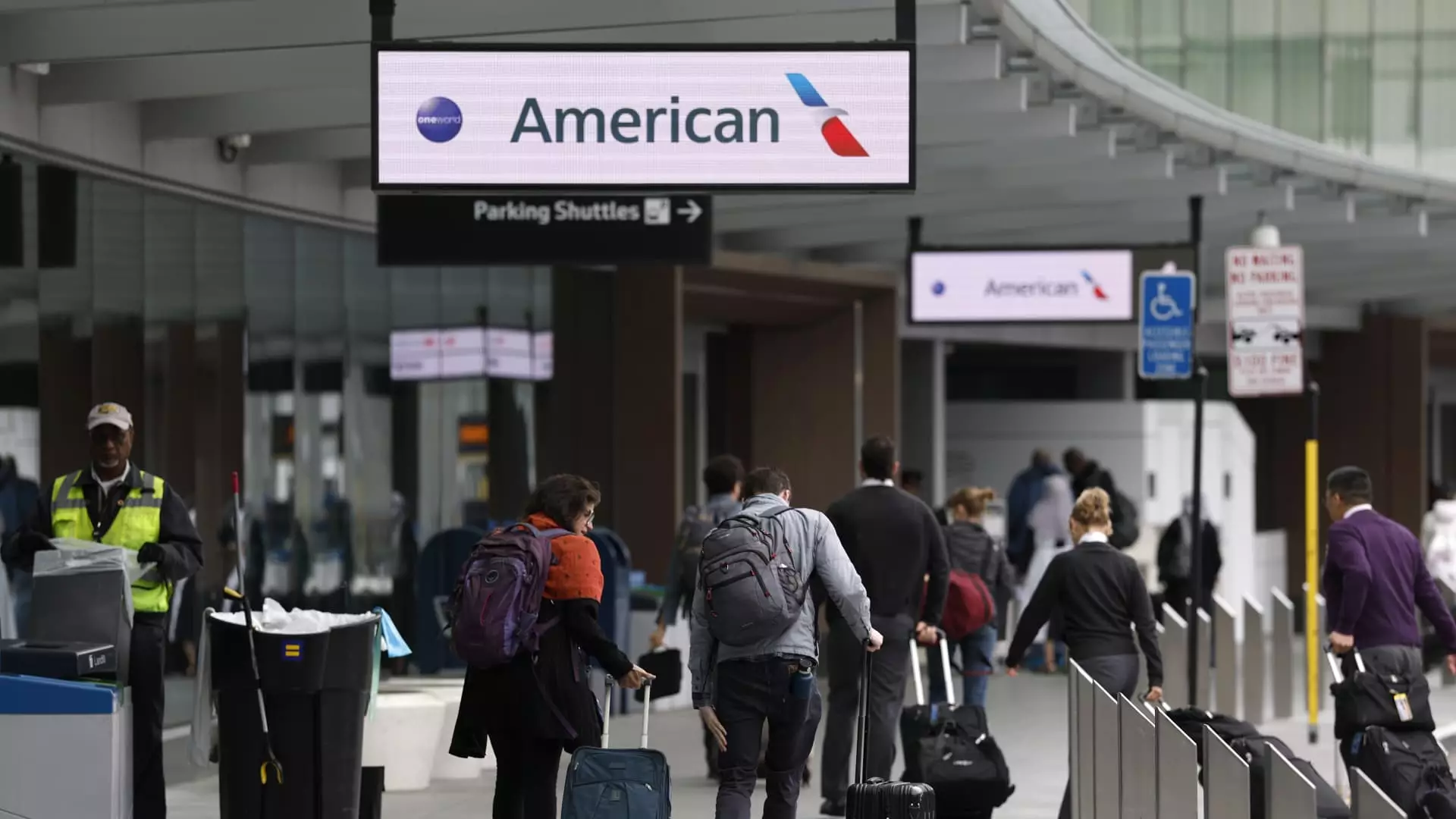The airline industry, once seemingly rebounding from the economic gloom of the previous few years, is encountering unsettling winds that foreshadow potential tumult. Recently, CEOs from major U.S. airlines delivered stark warnings during a series of earnings calls that travelers’ enthusiasm for domestic flights is not living up to elevated expectations set at the beginning of 2025. This revelation is more than a blip on the radar; it signifies a complicated interplay between market forces, political instability, and shifting consumer behaviors that could reshape the landscape of air travel.
American Airlines CEO Robert Isom articulated this sentiment when he highlighted the pervasive anxiety induced by economic uncertainty. The fallout remains palpable: when consumers’ confidence wavers, their willingness to spend hard-earned money on vacations diminishes significantly. The broader implications of this trend extend well beyond individual airlines; it could spell disaster for an industry that relies on discretionary spending to fuel its growth trajectory. The reality feels particularly jarring for executives who had daringly forecasted strong demand, only to be met with a stark contrast in traveler behavior.
The Ripple Effect of Political Decisions
Political dynamics are vital players in this unfolding drama, especially in the context of the Trump administration’s unpredictable trade policies and budget cuts. These decisions have invariably affected corporate and government travel, further complicating airlines’ ability to project profitability. Delta Air Lines and its peers have openly acknowledged that the uncertainty leaves them grappling with potential excess capacity, leading to the difficult but necessary decision to scale back on their capacity growth plans.
One particularly notable consequence of this excess capacity is a dramatic dip in airfares—down 5.3% in March relative to the previous year. While lower fares might seem like a boon for consumers, they signal deeper issues within the market. Price cuts often imply that airlines are struggling to fill their planes, reflecting a troubling complacency among consumers who might be feeling stretched financially. This is especially evident as corporate travel—the lifeblood of significant airlines—has hit a plateau, losing its previous momentum due to a cooling economy.
Corporate Travel: A Bellwether for Recovery
Corporate travel is often heralded as a reliable indicator of business health, given that companies usually allocate a budget for such trips. Unfortunately, the current economic landscape has turned these traditionally lucrative tickets into a gamble. Analysts, such as Conor Cunningham from Melius Research, emphasize that unpredictable environments deter corporate travel as companies hesitate to incur additional expenses when budgeting for future uncertainties becomes complicated. Consequently, the stall in business travel growth is a frustrating roadblock for airlines aiming to stabilize their profits and offset losses from the leisure travel sector.
Delta’s CEO Ed Bastian acknowledged this struggle, noting a sharp decline in the anticipated growth of business-related travel. This stagnation could resonate throughout the industry, as corporate clients tend to show less sensitivity to travel costs, thus providing a more dependable source of revenue. With this primary source diminishing, airlines find themselves scrambling to attract more price-sensitive customers, exacerbating their need to reduce fares further.
The Consumer Dilemma and Future Outlook
While some airlines, like Alaska Airlines, report that demand remains robust albeit not quite at peak levels, a looming question remains: how will consumers respond to continual uncertainty? If the inclination of average passengers is to hold off on travel plans, the effects will reverberate through the entire industry. This dampening of consumer sentiment both reflects and fuels a vicious cycle of lowered expectations and decreased profitability.
Despite these challenges, there’s a thread of hope woven into the fabric of this narrative. Isom of American Airlines expressed confidence in the promise of restored certainty and economic recovery, suggesting a potential resurgence in travel. However, the path to that optimism feels perilous at best. Until the airline industry finds a way to navigate the complexities of the current economic climate and political backdrop, the hope for a clear blue sky ahead may remain just that—a hope. With consumer habits in flux and the specter of recession looming, the future of air travel could rest on much more than just the fare price alone.

